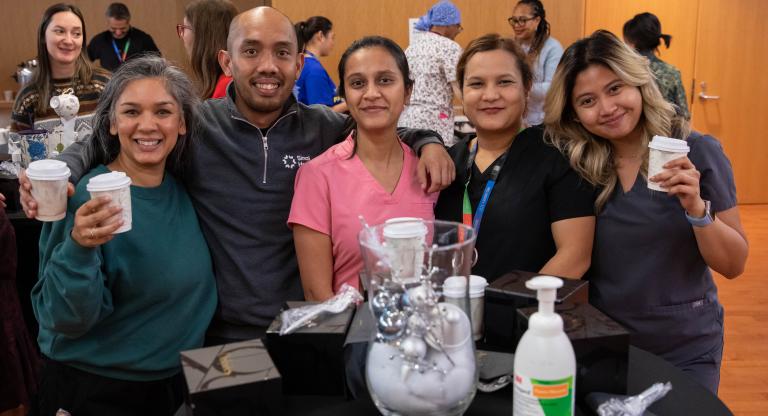Working towards a smoother ride for power wheelchair users

Travelling over uneven surfaces like bricks, grass, streetcar tracks and sidewalks can be uncomfortable, even painful for people who use motorized wheelchairs.
That’s why Cathy Choi, an Occupational Therapist at Bridgepoint is investigating this issue with the aim of providing a smoother ride for her clients. She and Robyn Davies, Interprofessional Education Specialist, enlisted the help of students at the University of Toronto to get this research project rolling.
Cathy works in Bridgepoint’s Seating Clinic where she prescribes custom wheelchairs. She has a first-hand understanding of this subject—she has used a motorized scooter and wheelchair herself. “I found I would experience back pain and fatigue after using a motorized scooter outdoors,” she says. “There are occupational health standards about workplace exposure to vibration from heavy machinery and the International Standards Organization has established that long-term exposure can have negative health effects on people. This made me wonder about the impact of vibrations produced by mobility devices and how they affect people who use them for the majority of the day, every day.”
A search of the literature revealed very little research on vibrations produced by power wheelchairs and their impact on users. Cathy is now aiming to help change that.
Robin Sommerfeld and Zachary McAlpine, two students in their final semester of the University of Toronto’s Master’s in Occupational Therapy Program, spent part of their summer working with Cathy on the project. Their goal: to gather initial data measuring the vibrations from wheelchairs and produce a guide to inform clinicians about factors to consider to reduce the effect of the vibrations.
“By reviewing studies related to vibrations in the workplace we saw how much exposure to vibration is considered safe and at what ‘dose’ you start to see a risk to a person’s health. The data was based on how strong the vibration and how long a person is exposed,” says Zachary. Robin and Zachary used the accelerometer on a smartphone to test the amount of vibration produced by different kinds of wheelchairs and on different surfaces, such as sidewalks, carpet and brick.
Under Cathy’s guidance, the students produced an information sheet to help inform clinicians about this issue and different factors to consider in optimizing the comfort of their clients. Cathy, together with Robyn Davies also worked with a group of engineering students from the University of Toronto to create a more precise tool and software to measure wheelchair vibrations. “Moving forward, I would like to work on improving and validating this tool for clinical use. We are also hoping to continue to increase awareness about vibration and its health effects through presentations and publication,” says Cathy. “In the long run, I would like this work to contribute to developing industry standards for vibration in power wheelchairs, as these currently do not exist.”
Robin says more research could lead to real improvements in the way wheelchairs are made. “There’s a lot of technology that’s used for shock absorption in cars and bicycles. Hopefully more research about this topic could push manufacturers to be more innovative in improving not just the way the chairs drive, but the way they feel.”











